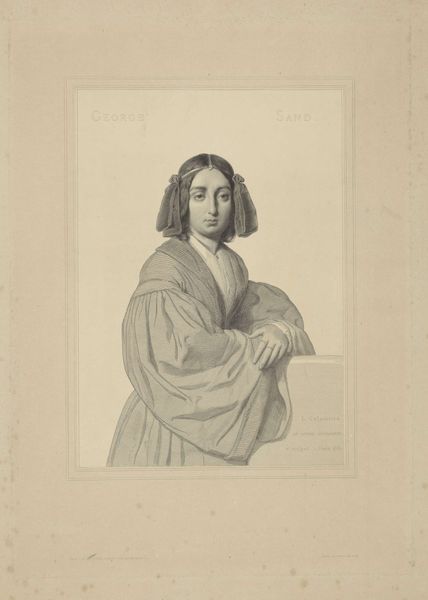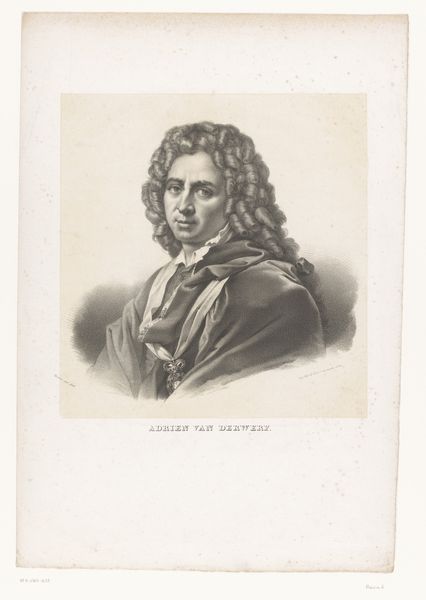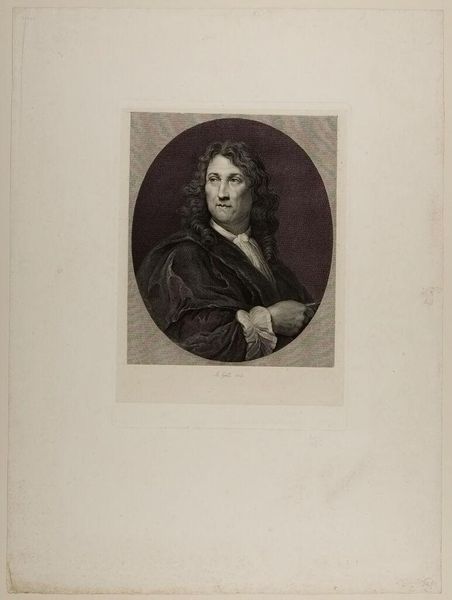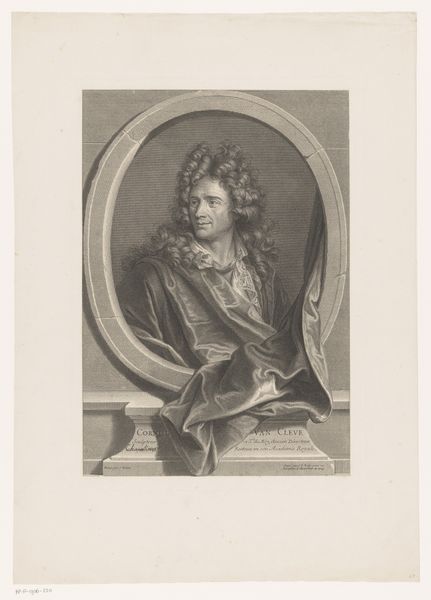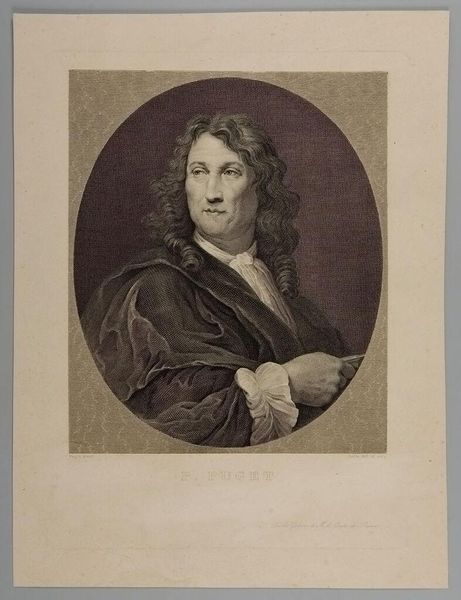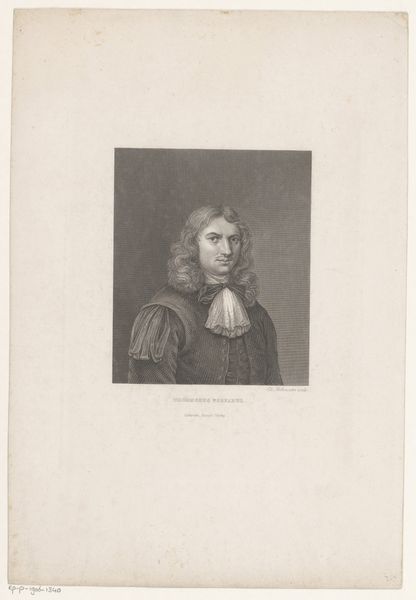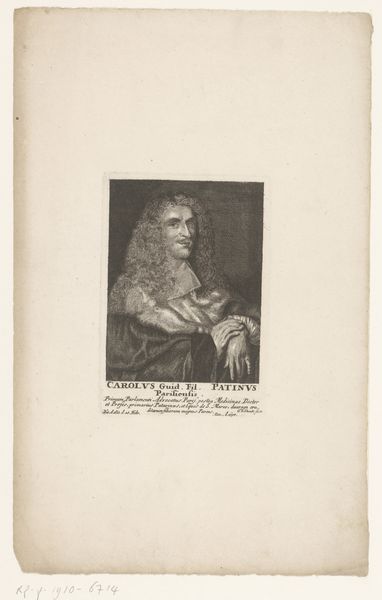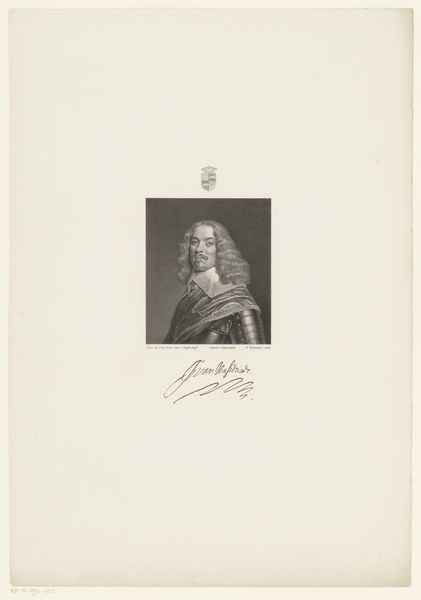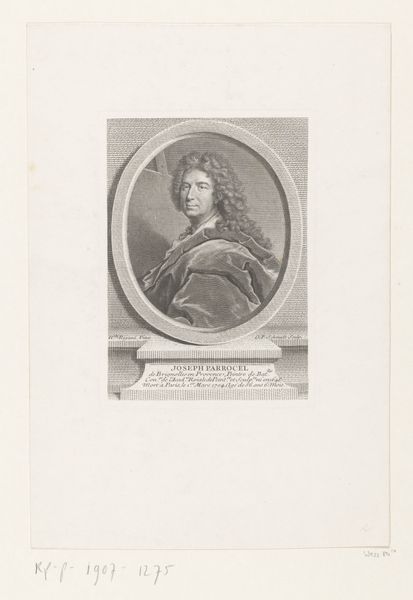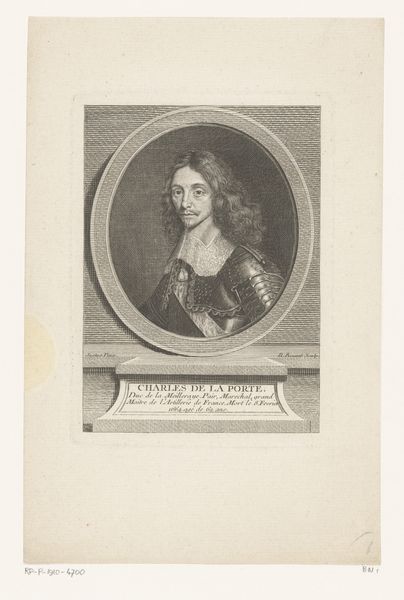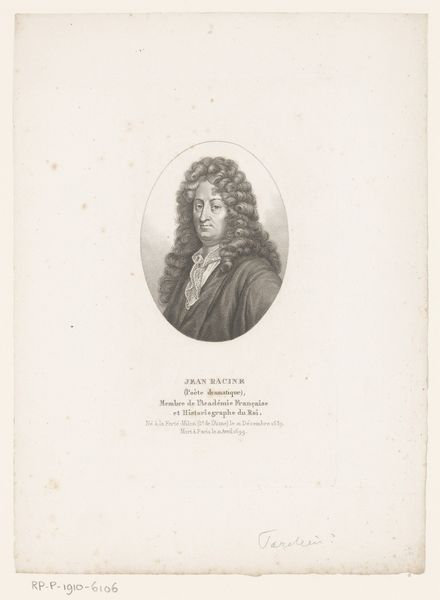
Dimensions: height 328 mm, width 252 mm
Copyright: Rijks Museum: Open Domain
Editor: Here we have "Portret van Pierre Bayle" from between 1857 and 1887, currently at the Rijksmuseum. It's a print, an engraving by Frederik Hendrik Weissenbruch. It's interesting how the Baroque style comes through, even though it was created so much later. What stands out to you most about this piece? Curator: I think the first thing that grabs me is how this portrait allows us to reflect on the relationship between representation and power, even centuries after Bayle’s death. Here’s a figure, Pierre Bayle, who championed religious tolerance. How might understanding that context reshape how we see this almost reverential depiction? Editor: That’s a really interesting way to frame it! It almost feels like the artist is putting him on a pedestal, even though Bayle himself was all about questioning authority. Curator: Exactly. Think about the time this engraving was made – mid-19th century. What socio-political forces might be at play in re-embracing a figure like Bayle through the lens of the Baroque? Were they using him to challenge contemporary forms of oppression or champion new values? Editor: So it's less about what the portrait itself is "saying," and more about the historical conversation it's a part of? Curator: Precisely! It’s a piece firmly embedded in a complex, ever-evolving cultural narrative. Do you see that impacting your understanding? Editor: I do! It's like the image becomes a stage for all these power dynamics. Curator: And understanding the artist's potential biases becomes crucial. Editor: It really changes how you look at art. Thanks!
Comments
No comments
Be the first to comment and join the conversation on the ultimate creative platform.
